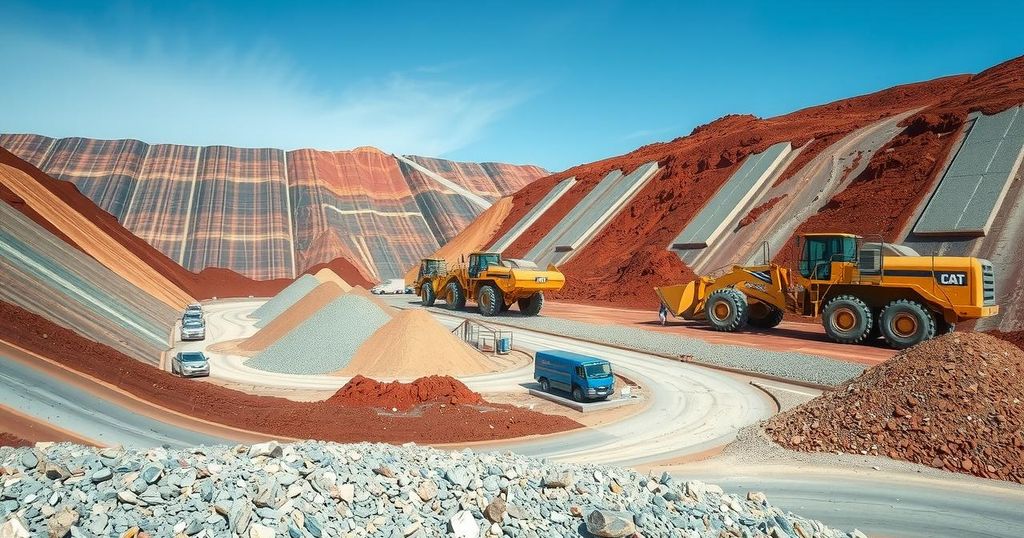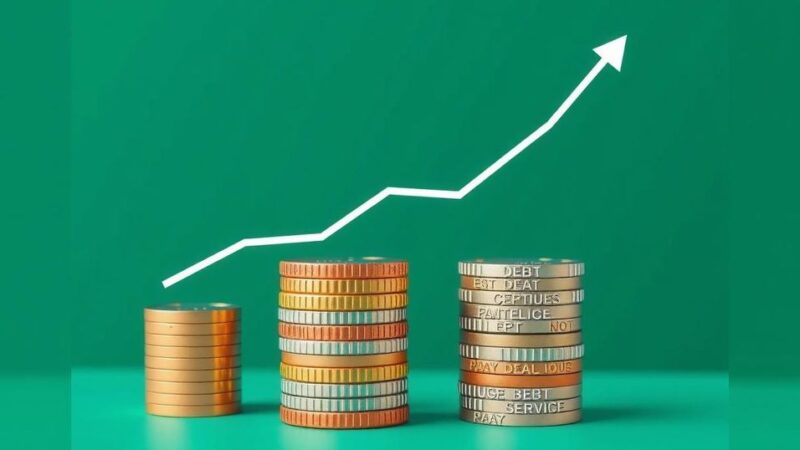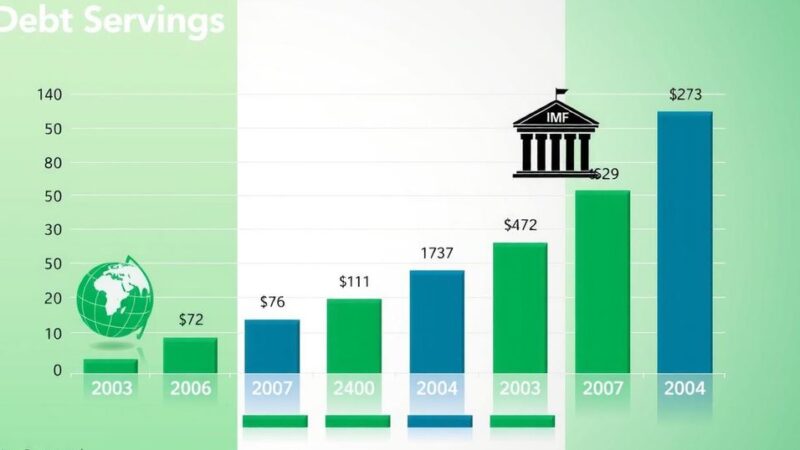The Simandou project in Guinea, featuring the world’s largest untapped iron ore deposits, is expected to commence production later this year. The $20 billion initiative aims to create 60,000 jobs and foster economic growth, yet faces significant hurdles such as financial transparency, infrastructural issues, and community unrest. Experts predict production is unlikely before 2028 amidst political complexities and safety concerns.
Deep in southern Guinea lies the Simandou mountain range, home to the world’s largest untapped iron ore deposits, estimated at 2.8 billion tonnes. This site was embroiled in one of the most significant financial scandals in mining history in 2013 due to a contentious ownership battle over development licenses awarded in the 1990s under former President Lansana Conté’s regime. Numerous proposed production start dates have been delayed by political upheaval and shifting licenses, hindering progress.
The ruling junta in Guinea, alongside new owners, asserts that production will begin later this year with the launch of an expansive mining complex. This initiative could be transformative for Guinea, where the mining sector contributes 90% of exports. Minister for Planning Ismaël Nabé expressed optimism regarding the project, emphasizing its potential benefits akin to oil wealth in Gulf countries.
The development plan includes a 650 km railway connecting the mine to three new deep-sea ports, a metallurgical plant, and an extensive asphalt network by 2040. Authorities anticipate a $20 billion investment will create approximately 60,000 jobs and support education for millions, fostering economic growth in a nation where many live on less than £2 per day.
High-budget promotional videos on the Guinean presidency’s YouTube channel label the project “Simandou 2040” as a potential “bridge to prosperity.” Industry experts suggest it might rival Australia’s Pilbara region in iron production capacity. In January, American rail provider Wabtec finalized a $248 million contract for locomotive supply, aiming to enhance rail infrastructure linking the mine to the Atlantic.
Despite these developments, significant concerns linger about the project’s readiness. Reports indicate incomplete railway segments and unresolved infrastructure issues, creating skepticism about the proposed October production start date. Additionally, financial transparency, safety, and environmental concerns are major issues affecting mining projects.
The ownership of the mining blocks became intricate following Guinea’s September 2021 coup. Two of the four blocks are held by a consortium including Rio Tinto and a Chinese firm, while the other two are managed by a Singaporean consortium. Activists such as Mamoudou Diallo have raised alarms about the lack of transparency regarding the project’s financing, suggesting only a select few within the ruling junta possess detailed knowledge.
Although Guinea joined the Extractive Industries Transparency International (EITI) in 2007, there remains a pressing need for the publication of recent contracts related to the Simandou concession. EITI’s Joanne Jones has stressed the importance of transparency in the process, urging clarity surrounding contracts.
Social unrest has also marred the project; a military intervention last year led to fatalities among local protesters, and recent reports highlighted several worker deaths linked to unsafe conditions on-site. Communities near the project have voiced concerns about environmental degradation, claiming their complaints about pollution and waste disposal have been ignored.
Experts like Bright Simons from the Imani Centre for Policy and Education have noted the complexities arising from multiple consortium involvements, which hinder progress. He predicts production in 2023 is unfeasible due to the need for coordinated infrastructure development. Many citizens jest online about the project’s timelines, while opposition figures indicate that the enthusiasm surrounding Simandou 2040 may serve as a political tool in advance of forthcoming elections.
Simons posits, “The plan is thus to play along with the messaging and do some show activities from mid-year, but serious analysts don’t expect credible production to begin before 2028.” Remaining hurdles, including synchronization of development efforts and community satisfaction, will likely influence the project’s success and the Guinean economy’s future.
In conclusion, the Simandou mining project in Guinea, with its vast iron ore resources, presents potential economic opportunities. However, significant obstacles remain, including political complexities, infrastructural readiness, financial transparency, and community concerns regarding safety and environmental impacts. The initiative’s genuine timeline for production is still uncertain, and many analysts remain skeptical about its feasibility before 2028. Continuous discussions on governance and accountability will be crucial for the project’s successful implementation.
Original Source: www.theguardian.com






